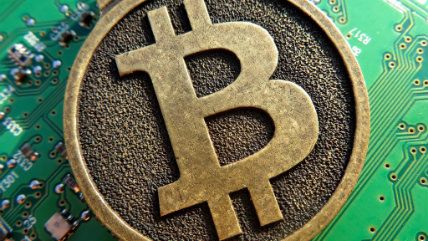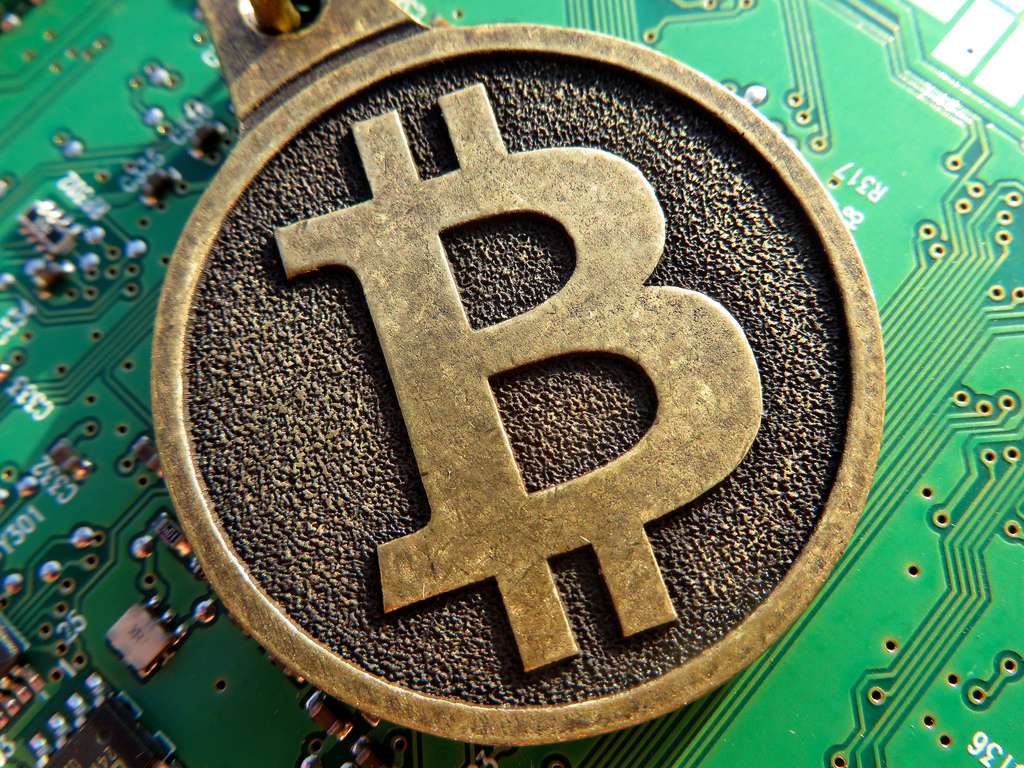Bitcoin Isn't Dead—But It Is Threatened by Tech Infighting
The cryptocurrency's crucial censorship-resistant property is not stewarded as cautiously as it should be by those in the Bitcoin community.


According to the popular press, Bitcoin has died and gone to cryptocurrency heaven at least 93 times already. Every few weeks, a new journalist gets wind of the censorship-resistant payment protocol and takes to the newsfeeds to declare its demise—more often than not, in the midst of healthy Bitcoin price appreciation. But the 89th obituary for the world's best-performing currency drew a bit more attention than usual because its author was former Bitcoin contributor Mike Hearn.
Hearn's doomsaying—conveniently timed with a New York Times piece sympathetic to his point of view—titillated mainstream gawkers. But to many within the peer-to-peer world, it appeared to be sour grapes (or deliberate sabotage) over the community's rejection of Hearn's most recent Bitcoin proposal. In BitTorrent creator Bram Cohen's words, Hearn's stunt was little but a "whiny ragequit."
Whether motivated by sincerity or butthurt, Hearn's last stand has not slowed down the Bitcoin project. A quick look at market data confirms that Bitcoin is quite alive. Many people (including myself) are still optimistic about the many exciting benefits that Bitcoin presents, such as affordability and flexibility. But these are ultimately only enjoyable side-effects. The core purpose of Bitcoin, as creator Satoshi Nakamoto clearly explained, is to "allow online payments to be sent directly from one party to another without the burdens of going through a financial institution." This property of censorship-resistance ensures that individuals across the world have a reliable option to make payments without fearing government or corporate suppression.
Without a censorship-resistant payment system like Bitcoin, individuals in oppressive situations have no hope to transact without the permission of their overlords. So it is no exaggeration to say that the fight to preserve Bitcoin's decentralized nature is the fight to protect individual liberty itself. Unfortunately, Bitcoin's crucial censorship-resistant property is not stewarded as cautiously as it should be, as the "great block size debate" of the past year illustrates.
Some background: In the early days of the Bitcoin network, Nakamoto instituted a temporary limit on the size of the transaction groupings, or "blocks," that Bitcoin miners could add to the distributed ledger of transactions, known as the "blockchain." He did this as an ad hoc measure to prevent spam attacks against the infant network, expecting that the one megabyte limit would be repealed without incident at an appropriate time in the future.
If the network does grow to the point that it reaches this arbitrary limit, it would hardly be catastrophic. But users might either have to pay higher transaction fees to prioritize their payments or wait longer for the network to process them, putting strains on the network's transaction volume and thus potentially threatening the network's scalability.
As the average block size inched closer to the one megabyte limit in 2014 and 2015—and more investment, business, and infrastructure rushed in to support the much-hyped Bitcoin project—developers turned again to the block-size limit problem. In theory, the solution should have been simple: raise or repeal the limit. Reality, as usual, was much messier, with the debate devolving into a regrettable and highly personal battle between defenders of Bitcoin decentralization and a group of reformers who would like to see Bitcoin resemble the centralized payment systems that we already have.
A larger-than-expected coalition supported the idea of a "hard fork" of the network. A hard fork allows Bitcoin developers to change elements of the protocol that are fundamental to its operation, which would include the block size limit.
But because some transactions that would have been invalid under the old rules would become suddenly valid after, a hard fork requires almost unanimous consensus from every single Bitcoin holder. If consensus is not clearly achieved, miners who lag in adopting to the hard fork may reject certain transactions that would have violated the old rules, while miners who have upgraded proceed to add them to their blocks. The result: two or more chains that coexist within the Bitcoin network, creating confusion among users and wreaking havoc on the price and viability of the network's future. Gathering the consensus required for a hard fork would be a near Herculean feat—and even then, the highly risky unintended consequences introduced by the change could be far more damaging than the ultimately manageable problem it would aim to address.
Still, many professional Bitcoin companies that provide third-party wallet and exchange services, along with legacy financial institutions hoping to cash in on the blockchain bonanza, supported the idea of a hard fork. And people who view Bitcoin as a tool to promote justice through fast and "free" payments likewise had an ideological reason to get behind it. These groups tended to coalesce last year around Hearn's proposed "Bitcoin XT" hard fork or former lead developer Gavin Andresen's related BIP101 proposal to increase the block size.
But there was a big problem: some of the most seasoned Bitcoin developers harbored very strong doubts that the protocol itself could handle Hearn's or Andresen's proposals without undermining the decentralization and censorship-resistance for which Bitcoin was created in the first place. Others were skeptical that the network could withstand any such kind of contentious hard fork at all.
Some suggested that the technical scaling problems could be better addressed by building off-chain solutions that would alleviate congestion while leaving the core protocol intact. Pieter Wiulle, the Bitcoin developer who has contributed the most patches to the code, introduced a proposal called "segregated witness" that could alleviate block congestion by removing extra information from transaction headers and thereby shrink the size of most transactions—all done by a less high-stakes and oft-deployed "soft fork" of the network.
These dissenters, however, lagged behind the hard fork evangelists in terms of public relations. Media outlets routinely covered the situation as if there were no viable alternatives to Hearn's proposal at all, churning out clickbait articles proclaiming that Bitcoin would fail entirely if Hearn's idea was scuttled. Hard fork skeptics— who literally built the techniques upon which Bitcoin relies—were accused by passionate yet pedestrian forum-dwellers of myopia, ignorance, and jealously guarding a "clubby" and non-transparent atmosphere. Soon enough, the Reddit rabble translated any hard fork opposition as a reactionary stand against free Bitcoin micro-transactions and charitable efforts in the developing world.
In response to criticisms and misconceptions, a group of respected core developers hosted a well-publicized conference in Hong Kong in December 2015 called "Scaling Bitcoin," where they discussed the most pertinent technical challenges facing Bitcoin and brainstormed on potential solutions. Participants branded their efforts "Bitcoin Core," to distinguish their vision from Hearn's "Bitcoin XT" and Andresen's later "Bitcoin Classic." The Bitcoin Core scalability solutions were endorsed by an impressive array of leading Bitcoin developers and continue to be developed for gradual implementation later in the year.
This new consensus projects a path forward that addresses scalability concerns while preserving Bitcoin's core censorship-resistance, and should be a welcome solution for parties on both sides of the block size debate. Imagine the shock, then, when Hearn published his oddly-worded rant declaring the Bitcoin project to be a failure entirely.
Contra Hearn, Bitcoin market prices remain healthy and loyal developers continue plugging away at scalability solutions. However, this incident clarifies a lurking cultural vulnerability that threatens Bitcoin's core property as a censorship-resistant protocol: the technical inputs that support Bitcoin's decentralization can be weaponized to neuter the technology. Passions can be inflamed by rampant misinformation. Forums and media outlets can be gamed to promote a vision that threatens Bitcoin's core censorship-resistance. Bitcoin survived this trial, but the cultural vulnerability remains.
Going forward, the community should take care to promote censorship-resistance as the non-negotiable centrality to the Bitcoin project, both to the public and to themselves. Only a unified acknowledgement of our stewardship of this critical human right can protect the network from subtle predation—and, ultimately, from ourselves.
